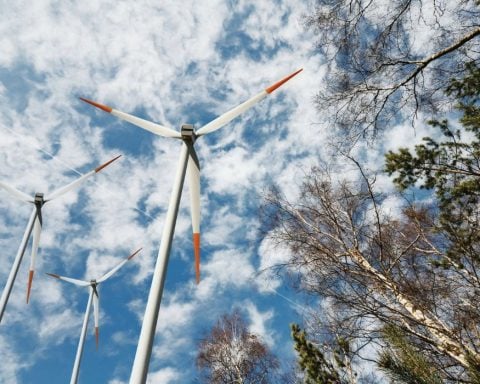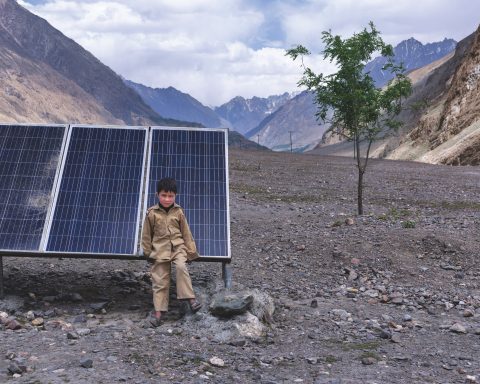It’s been more than a decade since Atomic Energy of Canada Ltd. (AECL) pulled the plug on its advanced CANDU reactor – a newly designed mega-reactor that industry said would usher in a “nuclear renaissance.”
Now Canada is seeing yet another promised resurgence for the nuclear industry. And this time, it comes in a size small. On December 1, Ontario Premier Doug Ford participated in a groundbreaking at Darlington nuclear facility, where provincially owned Ontario Power Generation (OPG) plans to build a small modular reactor (SMR).
If the Darlington project gets a green light on the final investment decision, the unit will be the first new reactor built in Canada in nearly 40 years, as other companies are pursuing plans to build SMRs across the country. (The nuclear sector has, however, been buoyed by massive reactor refurbishment projects at Darlington and Bruce Power’s eight-reactor site on Lake Huron.)
The industry’s latest hope, SMRs have a capacity of up to 300 megawatts and modular design features that are meant to keep construction costs under control (nuclear projects are notorious for their multibillion-dollar cost overruns). Micro reactors can be as small as five megawatts and are touted as an energy solution for remote communities and industrial sites like mines.
That’s in sharp contrast with the 1,000-megawatt behemoths that were marketed around the world in the first decade of the century by reactor manufacturers, including then federally owned AECL, Westinghouse Electric Co. and others.
The federal government and four provinces – Ontario, New Brunswick, Saskatchewan and Alberta – are lining up to support the commercial deployment of SMRs as low-carbon sources of electricity.
However, big questions remain about SMRs as the technology is largely untested. It’s unclear what the electricity from SMRs will cost and whether the technology can compete with cheap renewable sources like wind and solar backed up by storage. The prospect of micro reactors dotting remote Canadian landscapes also raises serious issues around safety and management of highly radioactive wastes.
Corporate Knights does not consider new nuclear power projects to be “green” in its Sustainable Economy Taxonomy. In July, the European Union overturned a draft proposal and included nuclear in its taxonomy for the purposes of green investing, though that controversial decision is being challenged in court by Austria, backed by several environmental groups.
In its fall fiscal update, the federal government introduced an investment tax credit of up to 30% for clean energy technologies, including SMRs. Ottawa has also committed $970 million in low-interest financing through the Canada Infrastructure Bank for the Darlington SMR project.
A bad day to go nuclear
Last decade was not kind to the nuclear industry, as Japan’s Fukushima meltdown after a tsunami in 2011 was the worst nuclear disaster since the Chernobyl accident of 1986 and led to the shutdown of all the country’s reactors. Those safety threats loom large today as Russia has attacked Ukraine’s nuclear energy site.
As well, the economic case for large new reactors has taken a beating over the years, as projects have been plagued by delays and cost overruns. Two signature projects in recent years have been particularly poorly managed: Areva’s plant in Finland and Westinghouse’s effort to build an advanced power reactor in Georgia. Westinghouse, which was then owned by Japan’s Toshiba Corp., was forced to declare bankruptcy in 2017 and was purchased by Toronto-based Brookfield Business Partners in 2018 for US$4.6 billion for its ongoing maintenance business.
But industry hopes are rising again, as the energy crisis in Europe has pushed Germany to extend the life of three nuclear plants it was set to close. And even Japan is looking to restart around 30 decommissioned reactors in pursuit of decarbonization.
And then there are SMRs. At the National Energy Roundtable’s conference at the end of November, several speakers argued for the inclusion of nuclear in Canada’s strategy to electrify the economy. Energy ministers from Ontario and New Brunswick touted the benefits of SMRs, saying the technology can provide affordable, continuous, non-emitting power.
The two provinces – in addition to Alberta and uranium-rich Saskatchewan – have agreed to work together on the commercialization of SMRs.
Ontario Energy Minister Todd Smith said the province is facing an energy supply shortage toward the end of the 2020s and sees SMRs as one of several generation technologies that will be needed to address it. (This expected electricity crunch in Ontario is in large part due to the Ford government ripping up contracts for more than 700 renewable energy projects.)
“It’s going to take an all-hands-on-deck approach to meet the demands of the future,” Smith said. And he urged the federal government to ensure that projects don’t get stalled in lengthy environmental assessment hearings.
SMRs have been a decade away from deployment for the last 30 years, while wind and solar are actually being deployed.
-Keith Stewart, senior energy strategist with Greenpeace
At Darlington, OPG expects to receive a construction licence in 2024 and will release detailed cost estimates as design and regulatory work proceeds, OPG spokesman Neal Kelly said in an email.
Former mayor of Iqaluit Madeleine Redfern said at the roundtable discussion that SMRs can help northern communities and industry end their reliance on expensive, dirty and often unreliable diesel generators. Small reactors, she said, would be more reliable than intermittent electricity production from wind or solar projects. (Redfern is also chief operating officer of CanArctic Inuit Networks and an Indigenous advisor to nuclear energy developer USNC-Power, which is partnering with OPG on a demonstration reactor project, as it seeks approvals from the federal nuclear regulator.)
Critics argue that SMRs pose the same problems of safety and waste disposal that have bedevilled the nuclear industry for decades. The future “lies in capturing the sun and wind, not in splitting atoms,” Greenpeace campaigner Keith Stewart said in an email. “SMRs have been a decade away from deployment for the last 30 years, while wind and solar are actually being deployed.”
Still, Ontario is betting heavily on nuclear to decarbonize the electricity grid even as demand for power could double or even triple as we move to electrify transportation, home heating and industrial energy needs.
Ontario will continue to rely on natural gas in the medium term to keep electricity costs down while the refurbishments at Darlington, Bruce and possibly Pickering can be completed. The Ontario plan anticipates that SMRs would also help end the reliance on natural gas. The Progressive Conservative government is even reviving conservation programs after killing them when Premier Ford first came to power in 2018.
Smith said Ontario is committed to electrification but will need the federal government to be a reliable partner to help keep costs down. “If the price of electricity soars, we’re not going to see electrification unfold,” he said.
However, whether SMRs can be a timely source of cheap and low-carbon electricity for Ontario and beyond remains to be seen.





